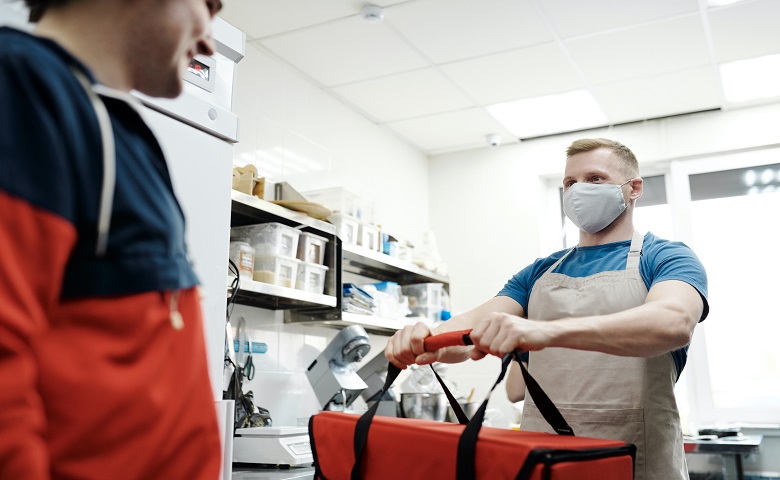In today’s fast-paced world, the food industry is continuously evolving. With the advent of technology, the way we order and enjoy our favorite meals has also transformed. This transformation has given rise to the demand for Food Delivery App Development Services. In this comprehensive guide, we will delve deep into the world of food delivery app development, exploring its nuances, benefits, and how it can revolutionize your culinary business.
Introduction: A Taste of the Digital Revolution
The culinary industry is no stranger to innovation. From traditional restaurants to food trucks, businesses have always adapted to changing consumer preferences. In recent years, the digital revolution has left an indelible mark on the industry, with food delivery apps emerging as a game-changer. These apps connect hungry customers with a wide array of culinary delights, all at the tap of a finger.
The Key Ingredients of Success
Successful food delivery app development services begin with a well-thought-out strategy. Here, we break down the essential ingredients for creating a top-notch food delivery app:
1. Market Research and Analysis
To create a successful food delivery app, you must first understand your target market. What cuisines do they prefer? What are their ordering habits? Conducting thorough market research and analysis helps you tailor your app to meet these specific needs, setting you up for success.
2. User-Friendly Interface
The user interface (UI) of your app is the first point of contact between your customers and your business. It should be intuitive, visually appealing, and easy to navigate. User-friendliness is the key to retaining customers and ensuring they return for more.
3. Seamless Ordering and Payment Process
Efficiency is paramount in the food delivery business. Ensure that your app offers a seamless ordering and payment process. Customers should be able to place orders and complete transactions with ease, reducing any friction in the user journey.
4. Real-Time Tracking
One of the hallmarks of a great food delivery app is real-time order tracking. Customers want to know the status of their order, from the moment it’s placed to when it arrives at their doorstep. Implementing this feature instills confidence in your service.
5. Robust Backend
A strong backend is the backbone of any food delivery app. It should efficiently manage orders, payments, and inventory. A well-designed backend ensures that your app runs smoothly, even during peak hours.
Food Delivery App Development Services: Beyond Convenience
The convenience of food delivery apps is undeniable, but their impact extends far beyond that. Let’s explore the broader implications:
6. Supporting Local Businesses
Food delivery apps provide a platform for local eateries to reach a broader audience. They help small businesses thrive by connecting them with a customer base they might not have access to otherwise.
7. Reducing Food Wastage
Efficient delivery routes and real-time tracking minimize food wastage. This not only benefits the environment but also improves the bottom line for restaurants.
8. Data-Driven Insights
Food delivery apps collect a wealth of data on customer preferences and behavior. This data can be leveraged to refine menus, pricing, and marketing strategies, ultimately leading to increased revenue.
9. Expanding Customer Reach
By offering online ordering and delivery, you expand your customer reach beyond the confines of your physical location. This allows you to tap into new markets and demographics.
FAQs: Satisfying Your Appetite for Knowledge
Q: How much does it cost to develop a food delivery app?
Developing a food delivery app can vary widely in cost, depending on factors like features, complexity, and development team rates. It can range from a few thousand dollars to a substantial investment.
Q: What are the key features of a successful food delivery app?
Key features include user-friendly UI, real-time tracking, secure payment options, restaurant listings, and customer reviews.
Q: How long does it take to build a food delivery app?
The development timeline can also vary but generally takes several months. Factors like app complexity, design, and testing can influence the timeframe.
Q: What technology stack is commonly used for food delivery app development?
Common technologies include frontend frameworks like React Native or Flutter, backend frameworks like Node.js or Ruby on Rails, and databases like PostgreSQL or MongoDB.
Q: Are there any legal considerations for food delivery app development?
Yes, legal considerations include food safety regulations, data privacy laws, and contracts with restaurant partners and delivery drivers.
Q: How can I market my food delivery app effectively?
Effective marketing strategies include social media promotion, influencer partnerships, local advertising, and offering discounts and promotions.
Conclusion: A Recipe for Success
In the ever-evolving food industry, staying ahead of the curve is crucial. Food delivery app development services offer a potent recipe for success, combining convenience, innovation, and customer satisfaction. By embracing this digital transformation, your culinary business can thrive in the modern age.



